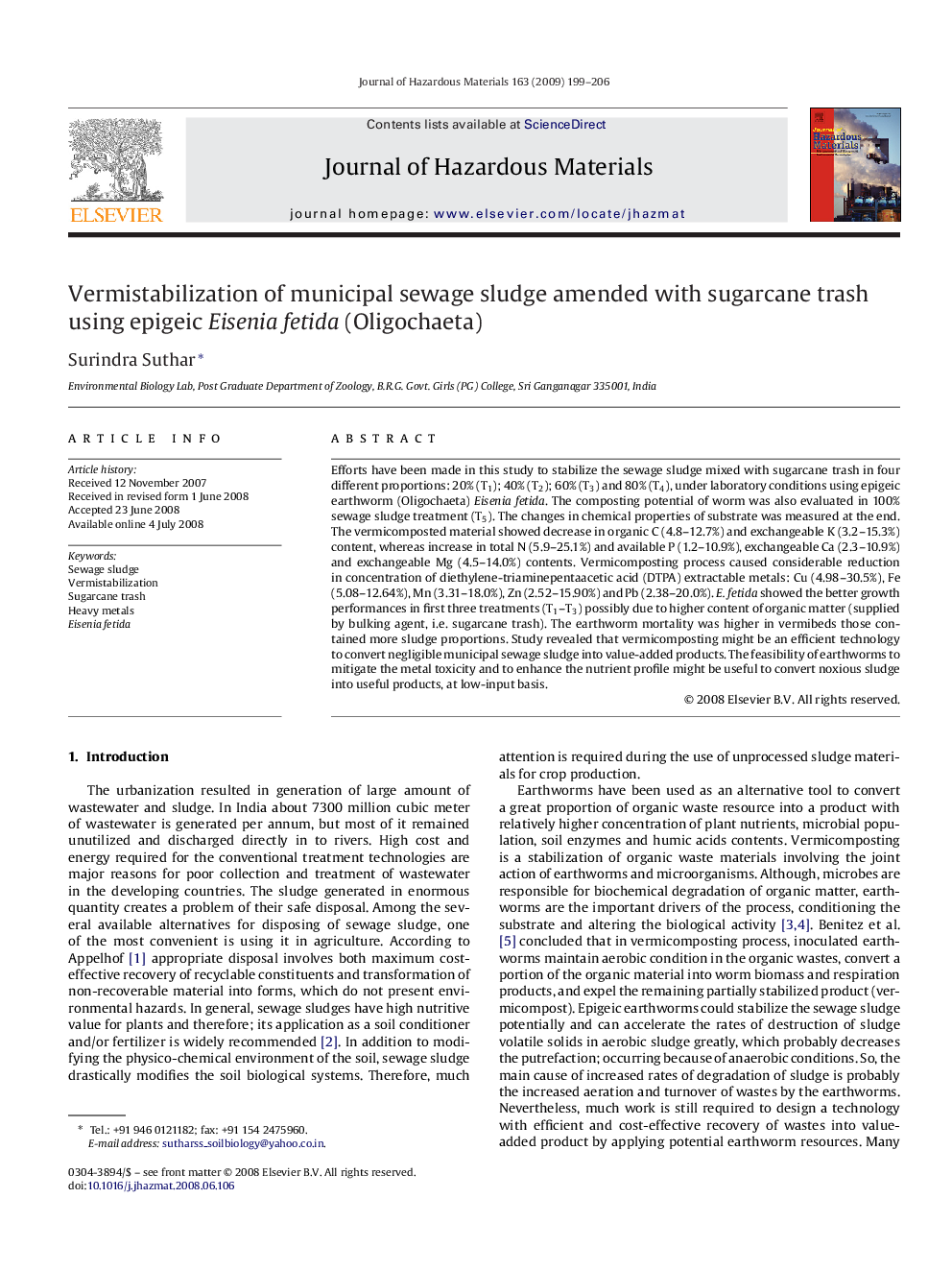| Article ID | Journal | Published Year | Pages | File Type |
|---|---|---|---|---|
| 581944 | Journal of Hazardous Materials | 2009 | 8 Pages |
Abstract
Efforts have been made in this study to stabilize the sewage sludge mixed with sugarcane trash in four different proportions: 20% (T1); 40% (T2); 60% (T3) and 80% (T4), under laboratory conditions using epigeic earthworm (Oligochaeta) Eisenia fetida. The composting potential of worm was also evaluated in 100% sewage sludge treatment (T5). The changes in chemical properties of substrate was measured at the end. The vermicomposted material showed decrease in organic C (4.8-12.7%) and exchangeable K (3.2-15.3%) content, whereas increase in total N (5.9-25.1%) and available P (1.2-10.9%), exchangeable Ca (2.3-10.9%) and exchangeable Mg (4.5-14.0%) contents. Vermicomposting process caused considerable reduction in concentration of diethylene-triaminepentaacetic acid (DTPA) extractable metals: Cu (4.98-30.5%), Fe (5.08-12.64%), Mn (3.31-18.0%), Zn (2.52-15.90%) and Pb (2.38-20.0%). E. fetida showed the better growth performances in first three treatments (T1-T3) possibly due to higher content of organic matter (supplied by bulking agent, i.e. sugarcane trash). The earthworm mortality was higher in vermibeds those contained more sludge proportions. Study revealed that vermicomposting might be an efficient technology to convert negligible municipal sewage sludge into value-added products. The feasibility of earthworms to mitigate the metal toxicity and to enhance the nutrient profile might be useful to convert noxious sludge into useful products, at low-input basis.
Related Topics
Physical Sciences and Engineering
Chemical Engineering
Chemical Health and Safety
Authors
Surindra Suthar,
